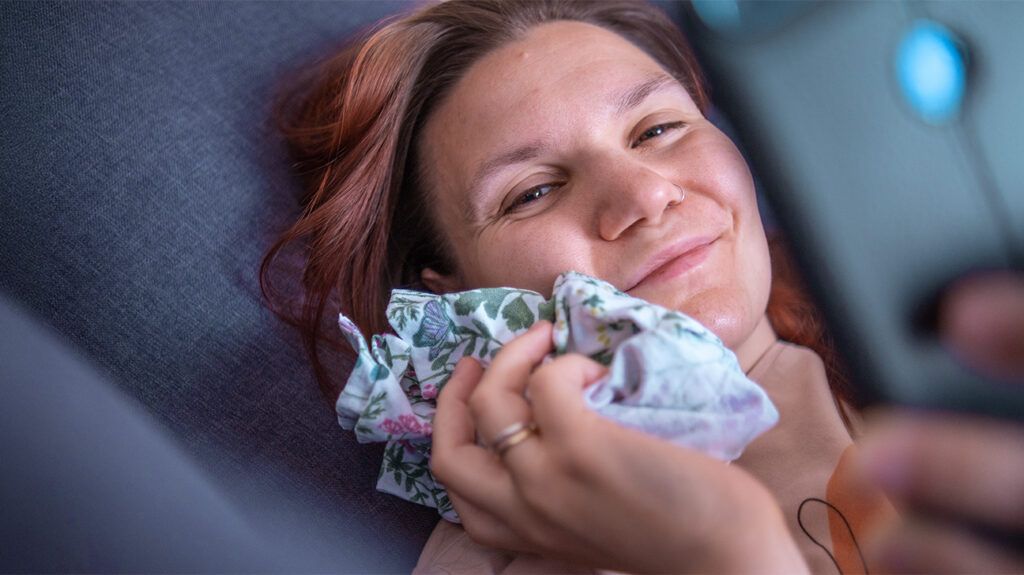During tooth extraction recovery, people must maintain the blood clot that forms in the tooth socket. Aftercare may involve rest, cold compresses, and over-the-counter (OTC) pain relief medication.
Tooth extraction involves completely removing a tooth from the mouth. People may require tooth extraction for many reasons, from tooth decay to crowded teeth.
A dentist or oral surgeon will perform the extraction in their clinic and then give the person instructions for caring for the area as it heals.
During the appointment, the dental surgeon will inject a strong anesthetic into the area around the tooth to prevent the person from feeling any pain. They will then use a series of instruments to loosen the tooth before pulling it out.
After removing the tooth, they will place gauze over the extraction site to help control bleeding and promote clotting.

Aftercare for an extracted tooth can vary depending on a few factors.
For example, recovery may depend on which tooth the dentist took out, as some teeth have deeper roots than others and take longer to heal.
Many people can return to their usual diet and activities after a week or so, but some people may experience complications that cause full recovery to take
People should speak with their dentist or oral surgeon about their specific recovery timeline and whether they will require follow-up visits.
One of the most important aspects of aftercare is maintaining the blood clot that forms in the socket where the tooth used to be. Caring for this blood clot is key to the healing process, and it helps prevent painful complications, such as dry socket.
Much of the aftercare in the first couple of days following an extraction focuses on allowing a blood clot to form and caring for the mouth in general.
Some bleeding after a tooth extraction is expected. According to the Oral Health Foundation, bleeding may look more severe than it actually is because the blood mixes with saliva in the mouth.
Bleeding typically occurs within 12 to 24 hours of the extraction. People should press clean gauze pads against the area for 20 minutes if they experience bleeding. If the bleeding does not stop, they should contact their dental surgeon.
People can also expect to experience pain, swelling, and bruising in the initial recovery period.
People should follow their dental surgeon’s advice during initial recovery, but aftercare may include the following tips:
- Get plenty of rest: Expect to rest for at least the first 24 hours after the extraction. A 2022 study suggests most people cannot go to work as usual for up to 3 days after a tooth extraction.
- Change the gauze as necessary: People should follow their dentist’s advice about changing the gauze. A dentist may advise to leave the gauze in place for a period after extraction and then remove unless bleeding starts again.
- Avoid rinsing: As tempting as it can be, avoid rinsing, swishing, or gargling anything in the mouth while the area is still clotting. These actions may dislodge any clot that is forming and increase the healing time.
- Do not use straws: Using a straw places pressure on the healing wound, which may dislodge the blood clot.
- Do not spit: Spitting also creates pressure in the mouth, which may dislodge the blood clot.
- Avoid blowing the nose or sneezing: A dental surgeon may instruct someone to avoid blowing the nose and instead wipe the area with a tissue. If someone needs to sneeze, they should do so with their mouth open.
- Do not smoke: While it may be beneficial to avoid smoking during the entire healing process, it is crucial not to smoke during the first couple of days as the blood clot forms.
- Take pain relievers: OTC pain relievers may help reduce pain and inflammation.
- Use cold compresses: Placing an ice pack or a towel-wrapped bag of ice on the area for 15 minutes at a time may help dull pain.
- Elevate the head: When sleeping, use extra pillows to elevate the head. Lying too flat may worsen swelling.
- Take any medications that the dentist recommends: The dental surgeon may order prescription medications for complex removals. It is important to complete the full course of treatment.
After the clot forms, it is vital to keep it securely in place and to follow extra oral hygiene steps to help prevent other issues. Tips for aftercare between the third and 7th day include:
- Mouth rinses: Some people may be able to use very gentle salt rinses after 24 hours, but should check with their dentist first. This mixture helps kill bacteria in the mouth, which may prevent infections as the mouth heals.
- Brush and floss as usual: Brush and floss the teeth as usual, but take care to avoid the extracted tooth altogether. The saline solution and any medicated mouthwash a dentist recommends should be enough to clean this area.
- Eat soft foods: Throughout the healing process, people should eat soft foods that do not require a lot of chewing and are unlikely to become trapped in the empty socket. Consider sticking to soups, yogurt, applesauce, and similar foods.
Most people can resume their usual diet and lifestyle after 7 days. However, it is always worth confirming with the dental surgeon before making any changes to the recovery routine.
Anyone who experiences complications during recovery or extraction, such as dental nerve injury, may have a longer recovery timeline.
People can speak with their dentist or oral surgeon to learn exactly how long their total recovery may take, including whether they will need to return to have any stitches removed.
It is common to experience pain and swelling after a tooth extraction. Some home remedies may ease the pain at each stage of the healing process.
Home remedies for tooth pain include:
- Nonsteroidal anti-inflammatory drugs (NSAIDs): NSAIDs, such as ibuprofen (Advil) and naproxen (Aleve), may help reduce both swelling and pain.
- Ice packs: Applying a towel-wrapped ice pack to the affected side of the ice for 15 minutes at a time may help reduce pain and swelling.
- Saltwater rinses: As part of a daily care routine, saltwater rinses may help kill bacteria in the mouth and reduce swelling and pain. People may need to wait at least 24 hours before using saltwater rinses.
People should speak with their dentist before using home remedies to ensure they will not adversely affect recovery.
The typical healing process can take
Signs that someone should contact a dentist include:
- pain and swelling that get worse with time
- bleeding that does not stop after using gauze and pressure for 10 minutes
- a high fever
- nausea or vomiting
- severe pain that spreads to the ear
- drainage from the wound that tastes or smells foul
- continued numbness that lasts more than a few hours
Sometimes, dental surgeons will need to extract more than one tooth at a time. When extracting multiple teeth, the surgeon may recommend general anesthesia instead of local anesthetic. If this happens, the person will be unconscious during the surgery.
The dentist may also give them some special instructions leading up to the extraction, such as avoiding food for a certain time. After the procedure, the person may need someone else to drive them home.
Caring for multiple extractions can be challenging, especially if they are on different sides of the mouth. Dentists may have specific instructions for these cases, and they may request a follow-up appointment shortly after the extraction.
They may also use clotting aids in the extraction sites. These are small pieces of natural material that helps clotting. The body breaks the clotting aids down safely and absorbs them over time.
In general, dentists will
Wisdom teeth extraction usually involves local anesthetic. Aftercare is similar to that for other types of teeth, but a dentist may provide the person with additional tips to aid healing.
The healing process is similar for children. It is essential for parents or caregivers to monitor the child’s healing and oral health closely and to ask them questions about symptoms such as pain and bleeding.
Tips for helping a child recover from tooth extraction include:
- encourage them to leave the wound alone, not to touch it with their fingers or teeth
- take care that they do not bite the inside of their mouth, as the area will likely be numb
- avoid mouth rinsing for 24 hours, and help them with regular salt rinses after this
- stick to soft, cold food
- avoid all food until their mouth is no longer numb
- avoid the extraction area when brushing their teeth
- use gauze to stem any bleeding and call the hospital if it does not stop after 10 minutes
Parents and caregivers should contact their child’s doctor or dental surgeon if they have any concerns during the recovery period.
Tooth extraction completely removes a problematic tooth to prevent future complications.
Proper aftercare is vital after a tooth extraction, as it helps promote clotting and protect the extraction site during the healing process. Most simple extractions should heal within a couple of weeks.
Anyone experiencing worsening symptoms after a tooth extraction should see their dentist.


